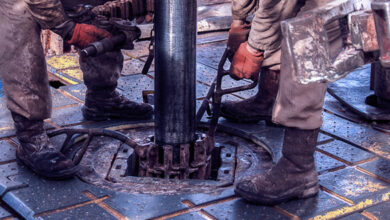Technical Session 10 – Drilling Automation
Editor’s note: These abstracts have been edited for space and clarity. This program is current as of 15 January 2013. Additions, withdrawals and other changes to the conference program after this date may not be reflected. Click here for the most updated program.
TECHNICAL SESSION 10: DRILLING AUTOMATION
SPE/IADC 163412
Industry Analogies for Successful Implementation of Drilling Systems Automation and Real-Time Operating Centers, J.P. de Wardt, de Wardt and Co
It is very important to define current state and future desired state for data acquisition, processing, decision making and work flow in high-performance drilling operations. Understanding the difference between these two states provides the opportunity to guide the successful implementation of drilling systems automation (DSA) and real-time operating centers (RTOCs).
Various industry analogies will be evaluated for their applicability to DSA and RTOCs. The benefits and drawbacks of each will be highlighted. A guide will be developed to define best practices and relevant application for various well types from these analogies.
SPE/IADC 163466
Autonomous Robotic Drilling Systems, K. Soendervik, K. Mikalsen, Robotic Drilling Systems
A full-scale autonomous robotized drill floor prototype has been run over the last two years in Norway, showing the potential of a much more cost effective and safer, unmanned drilling process. Furthermore, a simulated reality combined with a surveillance system is used for operation and visualization of the rig. This system also makes it possible to run the entire drill floor including the actual control system and simulated I/O, utilizing the final man-machine interface during the design faces of a drilling structure.
Robotic drilling systems will dramatically reduce the cost of drilling and reduce environmental impact. An autonomous robotic drill floor with a divergence system will eliminate human error.
SPE/IADC 163449
Drill Pipe RFID: A Key Enabler in Drilling Automation, M. Grinrod, Minerals Group AS; M. Vonlanten, Trac-ID; R. Gaaso, Statoil
Radio frequency identification (RFID) for drill pipe has been developed to withstand temperature and shock/vibrations encountered in most wells. This paper outlines the technology development and status for application of RFID tags on drill pipe. Key challenges has been temperature limits, vibrations, wear and max tripping speed to pick up radio signals. Further, the paper outlines present software applications and future possibilities in software development.
SPE/IADC 163440
Toward Drilling Automation: On the Necessity of Using Sensors that Relates to Physical Models, E. Cayeux, B. Daireaux, E.W. Dvergsnes, Intl Research Inst of Stavanger; F. Florence, National Oilwell Varco
Current topside and downhole instrumentation at the well site has been developed for the purpose of manually conducted drilling operations. The emergence of automatic drilling analysis software shows the limitations of today’s measurements capabilities. It is therefore time to analyze the requirements for on-site instrumentation in order to implement new, efficient drilling automation technologies.
SPE/IADC 163439
Design Aid for Charting a Drilling Automation Road Map, M. Zamora, M-I SWACO; G. Hildebrand, Schlumberger Trinidad
A new design tool has been developed to chart a technology roadmap for drilling automation. The concept is based on a ternary chart, a triangular diagram that graphically depicts the composition of three-component systems. For drilling automation and perhaps automation in general, the components are automated equipment, human involvement and remote control. The relative contributions, by definition, must total 100%. In contrast, Sheridan’s well-known automation hierarchy considers only two components – automated equipment and human involvement.
SPE/IADC 163571
Pipe-Handling Integration in Land Drilling Operations – Safety Review, Operational Drivers and Field Performance Feedback, T. Yost, J. Heinen, National Oilwell Varco; M. Garvin, Patterson UTI
A fingerboard mounted pipe-handling system has been introduced, which differs from previous attempts to eliminate the manual interaction of a derrickman in land drilling operations. The machine was the outcome of unique consensus between the designer and the drilling contractor and provides a solution equivalent to manual tripping speeds that is strongly accepted by the drill crew.
Critical to operational success was tripping speed, simplicity and following the process that a manual operation is comfortable with. Eliminating the existing gripping devices and hoisting systems were one of many steps taken to improve the acceptance of a safety support tool on a working drilling rig.
This paper will examine a case study with Patterson UTI and an equipment manufacturer, which will show the performance feedback from a field proven solution. It will also address the barriers that hold this advancement back and has the possibility of greatly increasing safe land drilling operations.
E-POSTERS:
SPE/IADC 163453
On the Path for Offshore Drilling Automation, A.L. Martins, Petrobras
This article deals with important steps, which compose the natural path aiming drilling automation, a topic foreseen by the industry as a key player for assuring the success of a huge number of projects to be developed in the Brazilian deepwater scenarios.
SPE/IADC 163473
Automatic Mud Mixing, R.R. Nafikov, Statoil
The paper describes automation of drilling fluid mixing and is based on Msc thesis. The investigation is based on developed model with the help of MATLAB and SIMULINK softwares. The idea of the paper is to bring new ideas into the industry by presenting simplified explanation of the automation task.




